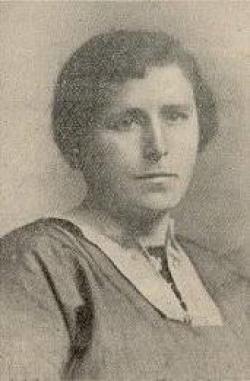By Andy Fenwick
The First World War brought social upheaval to Glasgow, as the need to supply armaments gave rise to a big expansion of the workforce in the city. These workers and their families were housed in extremely cramped, damp and insanitary living conditions. Strikes and unrest grew amongst this growing unionised workforce to reach high levels of militancy. Workers protested throughout the war years, striking in factories, mines and shipyards.
It was a boom time for the capitalists and landlords of Glasgow, but for the occupants of slum tenements the landlords offered only exploitation and despite housing shortages rents were increased. If sitting tenants could not pay up others would. Besides, the men were away fighting or were being held in German prisoner of war camps and the landlords thought the women would be a soft touch.
The women thought otherwise and in February 1915, local women formed the Glasgow Women’s Housing Association to resist rent rises. Helen Crawford and Mary Barbour (pictured above) campaigned to build up working class organisations. In the working class districts, committees were formed to resist increases in rents. Cards, oblong in shape, were printed with the words ‘RENT STRIKE. WE ARE NOT REMOVING’ and placed in the windows of the houses where rent increases were demanded.”
Well-organised resistance
The resistance was not passive but well-organised and in each tenement a woman with a bell would sit guard, watching, while the other women living in the tenement went on with their household duties. Whenever the Bailiff’s Officer appeared to evict a tenant, the woman in the passage immediately rang the bell and the other women put down whatever work they were doing and hurried to where the alarm was being raised. The noise levels would increase in volume as pots and pans and football rattles echoed around, to summon women far and wide.
They would hurl flour bombs and other missiles at the bailiff, forcing him to make a hasty retreat. The occasional chamber pot was emptied. It is said they even humiliated one bailiff by pulling down his trousers!
Mary Barbour was involved in every aspect of activity, from the organising committees to the physical prevention of evictions and the hounding of the Sheriff’s Officers. 25,000 households refused to pay rent and this well-coordinated mass resistance earned the nickname of “Mrs Barbour’s Army”.
Mary Barbour did not see this just as a woman’s issue but demanded action from all trade unionist in Glasgow. An examplewas in Govan, when on one occasion, a woman had been persuaded by the House Factor to pay the increase, having been told that the other tenants had paid. Mrs Barbour got the men from the shipyards in Govan to come out on to the street where the House Factor’s office was, and then went up with the women and demanded a return of the money. On being shown the thousands of workers, dirty-faced and straight from the shipyards, crowding the street, the Factor meekly handed it over.
Shipyard strikes in support of rent strikers
The decision by a Partick factor to prosecute 18 tenants for non-payment of a rent increase brought the crisis to a head in Glasgow’s small debt court on 17th November 1915. Many of those in arrears were shipyard workers and there were strikes in support and deputations sent to the court. Thousands of women marched with thousands of shipyard and engineering workers, in what the Govan Press described as “remarkable scenes”.
Headed by a band of improvised instruments, including tin whistles, hooters, and a huge drum, the procession aroused a good deal of interest. The majority carried large placards with the words: ‘Rent Strikers. We’re not Removing’.
The Sheriff Court was alarmed at the sheer size of this peaceful demonstration. Lloyd George, munitions minister told the Sheriff Court to release the tenants and promised he would take action. Outside the court the celebrations went on for hours. Less than a month later Parliament passed the Rent Restriction Act,
The way in which the industrial and housing protests combined to challenge the authority of landlords and the state was the most successful example of direct action undertaken by the Scottish working class in that period and it generated an entire tradition around ‘Red Clydeside. It was to inspire the World War II strikes in the Rolls Royce factory and it became the blueprint for the campaign against Thatcher’s hated poll tax generations later. Mary’s involvement in this struggle made her a local hero in Govan and her radicalism lived on as an example to working class women for many decades afterwards. On International Women’s Day last year a new statue of her was unveiled at Govan Cross, as a very fitting and permanent tribute to her work and her legacy.
March 8, 2019



